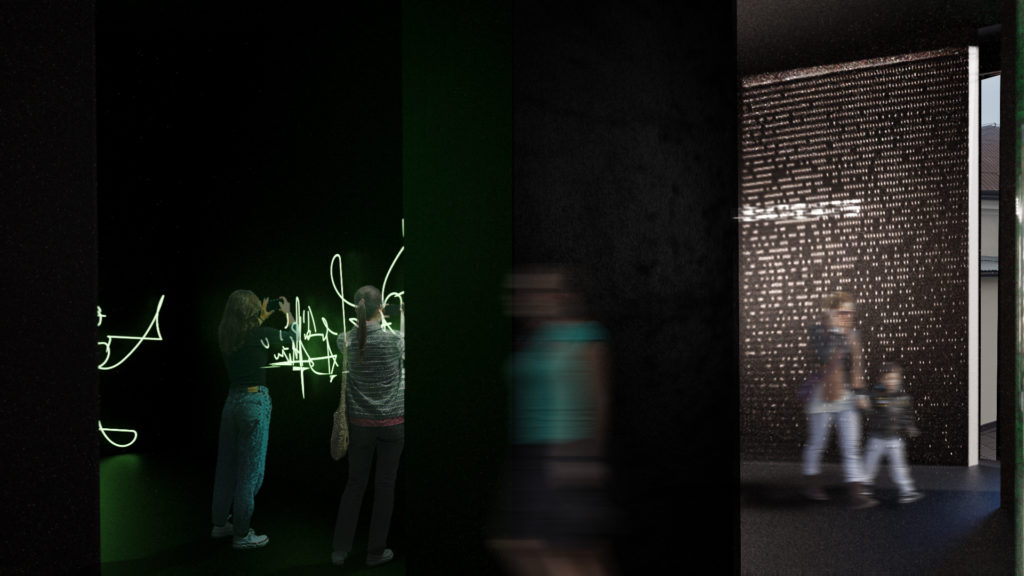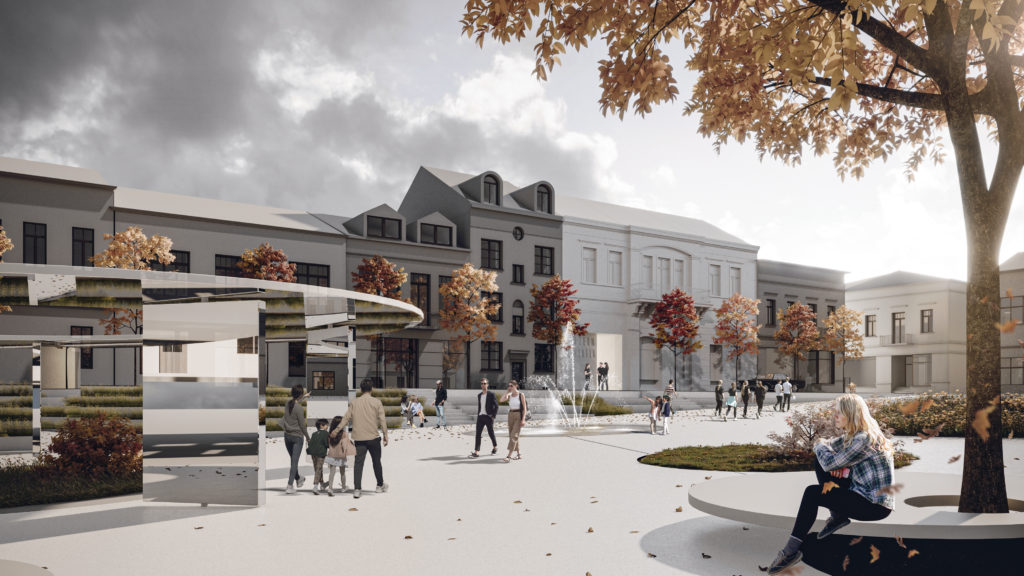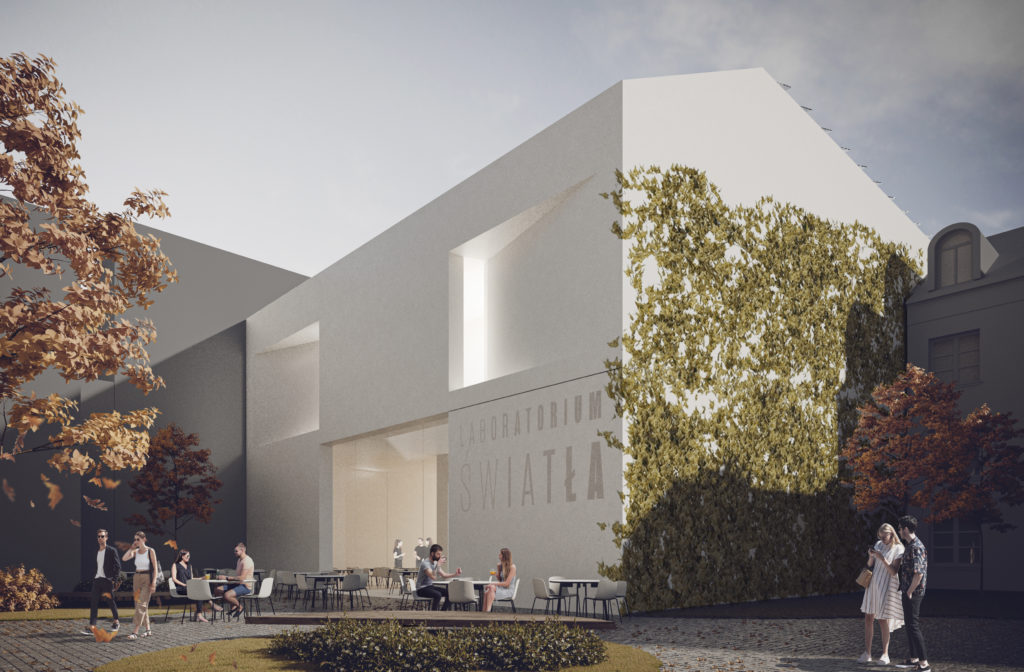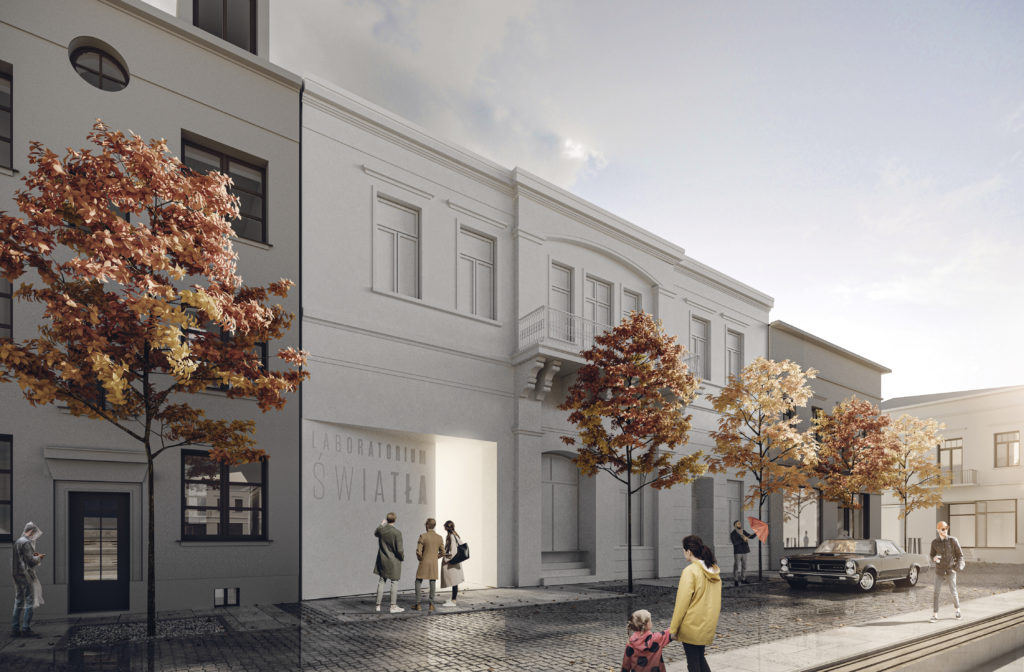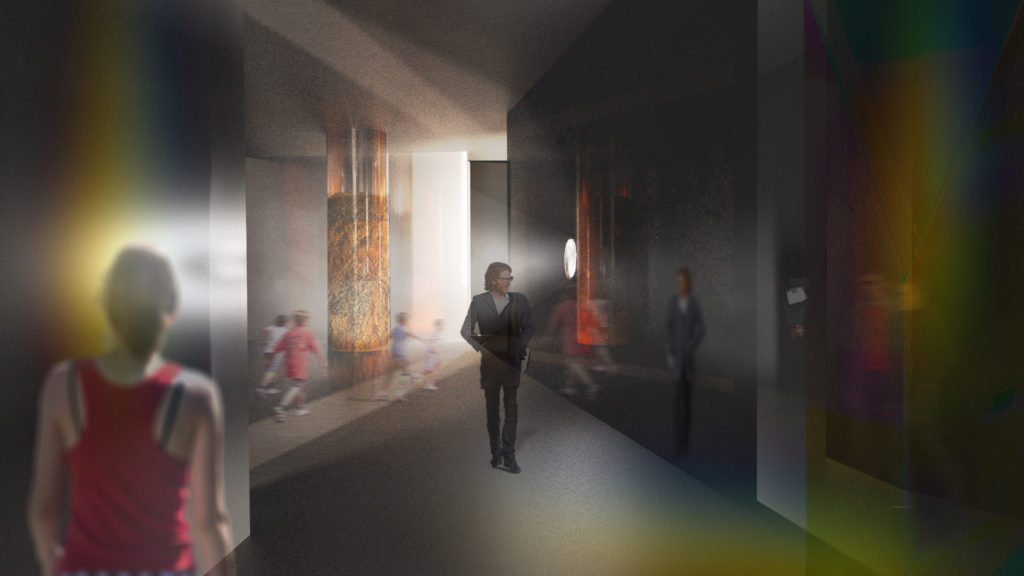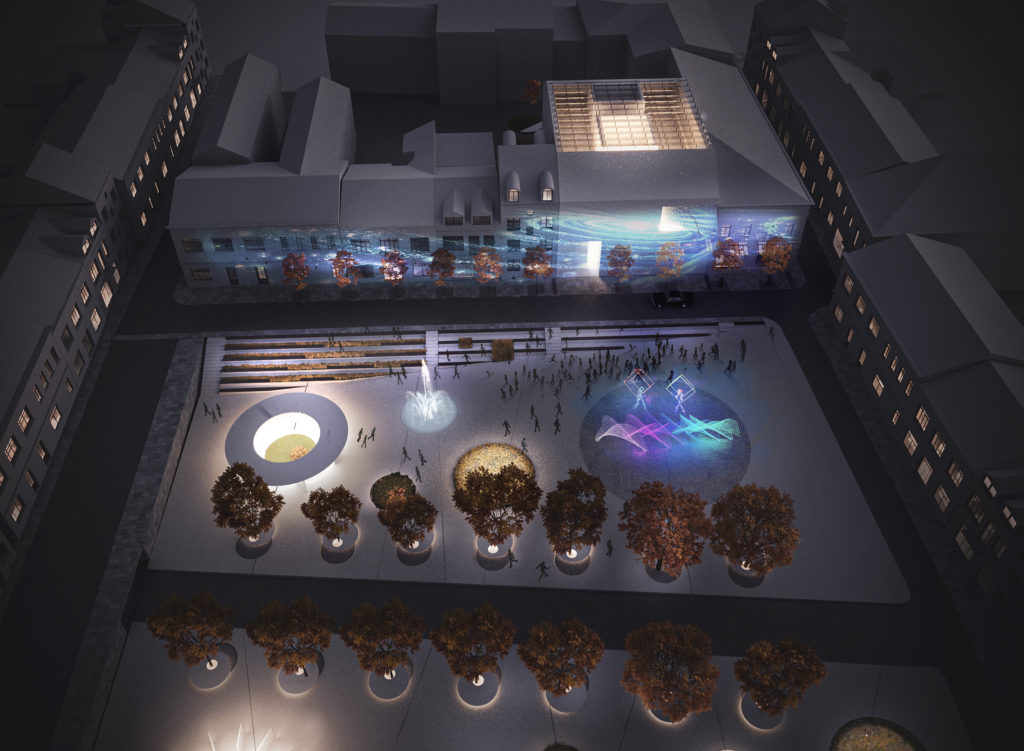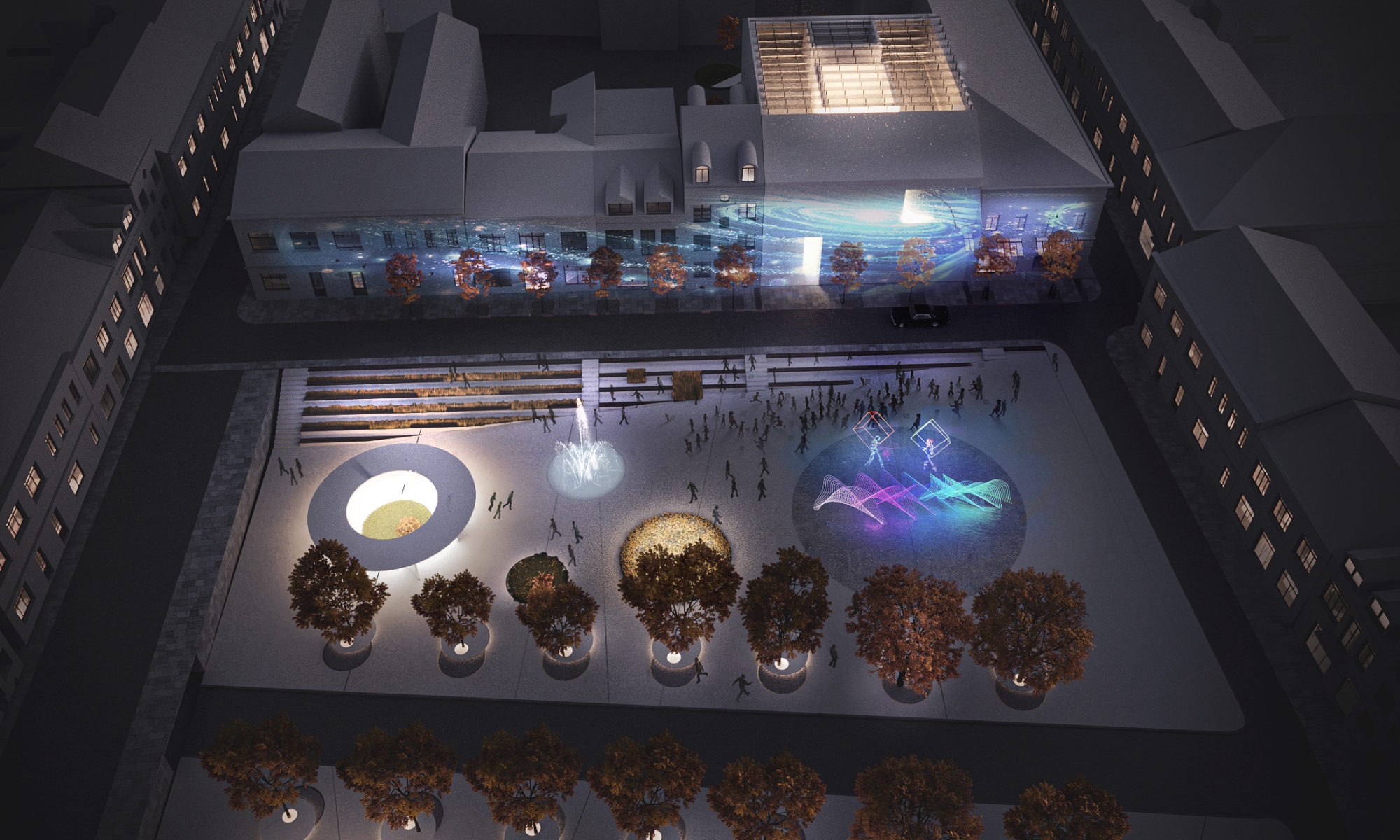
LIGHT LABORATORY IN GORLICE
Nizio Design International has developed a modern concept for the revitalisation of a tenement house at the Gorlice market square in order to turn it into a unique scientific and historical centre. The project is to be created in a town house built between 1900 and 1910 which has been undeveloped for a long time.
Gorlice is the place where the world’s first street kerosene lamp was lit in 1854 thanks to Ignacy Łukasiewicz. The Polish scientist thus started a great civilisational revolution that changed the face of the world and introduced the oil, which we use in almost every area of life, into everyday use.
The Light Laboratory project – both in terms of architecture and exhibition concept – is intended with its innovation and modernity to remind us of the importance of that discovery. “We were inspired by the courage of Polish scientists, we wanted to think as innovatively and forward-looking as they did. This building is meant to serve generations and creatively influence the Gorlice space. We also wanted to capture something ephemeral: the mystery of the phenomenon of light and its significance for humanity,” says Mirosław Nizio, author of the concept.
The building of the Light Laboratory has been designed to create the best possible space for the presentation of the phenomenon of light, both outside and inside the building. This will be achieved through the minimalism and asceticism of the body.
The ascetic façade of the building will provide a kind of clean sheet for presenting light shows. Even the natural play of the sun’s rays itself will make the structure look different depending on the time of day and year. In addition, the façade can act as a plane for presenting mappings, projections, and art installations using light which will enliven and invigorate the Market Square space during cyclical town events. The façade will be made of white architectural concrete, which will emphasise the minimalism and modernity of the project.
The design of the building is inspired, among other things, by the camera obscura – an optical darkroom, a device that is simple in its construction and yet revolutionary for science and art. Like that invention, the body of the Light Laboratory benefits from the inclusion of openings in the simple structure that introduce light into the interior which plays not only a functional role but also a substantive one.
In the centre of the body, after the transformation of the former courtyard, the core of the building will be formed, illuminated by natural light which can be seen as a symbol of progress, a great idea for which man has been striving throughout history. Spaces for immersive audiovisual performances are planned for the ground floor. A lighted, luminous staircase will lead visitors to the first floor with the permanent exhibition and the second floor where modern laboratory-style workshop rooms will be located.
The revitalisation of the building will be implemented in relation to the existing urban layout of the square, but at the same time, it can give the town’s main square a new character. The body will bring fresh energy to the space of Gorlice, it will show the future possibilities of development of the entirety of surroundings and will be able to set the next steps to the renewal of the appearance of this space. The building will be opened towards the square, and the spectacular entrance will invite people walking on the square to visit the Laboratory. “We were not limited to thinking about the building itself, without its context and spatial and social surroundings. We took a comprehensive look at them and decided to highlight the opportunities that are associated with the revitalisation of the building and its impact on the neighbourhood. We see an opportunity for the Light Laboratory to shape urban relationships throughout the centre of Gorlice,” says Nizio.
The centre’s concept prepared by Nizio Design International involves creating a permanent exhibition in the renovated building. In order to create a fascinating narrative that can attract and interest tourists from all over the country and the world, the person of Ignacy Łukasiewicz will be presented in a broader, global context. Therefore, the exhibition will tell not only the local history of Łukasiewicz and Gorlice, but also the distinctiveness of the physical phenomenon of light itself, the sources of energy generation, and the global significance of lighting for human existence, culture, art, and economics.
The idea of the arrangement of the permanent exhibition will be based on the wealth of possibilities for using light – both in its natural and artificial form, of different intensity and colour. Light, presented in various forms, will set the rhythm of the exhibition tour, and interact with the visitor, setting the right mood, and drawing attention to the relevant objects or spaces. The exhibition will also be a space for open debate about the problems of the past and the challenges of the future.
The Laboratory’s narrative will present both the advantages and disadvantages of human interference with the natural landscape, the use of nature, and its resources.
